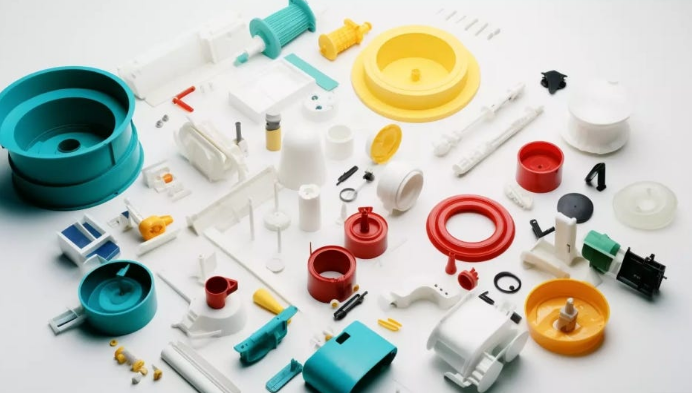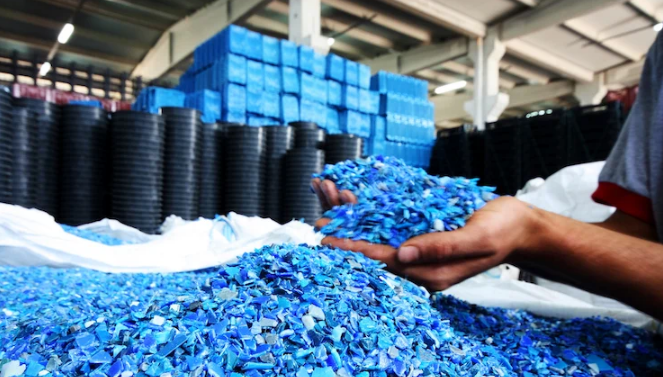Sustainable plastics in injection molding are used for eco-friendly packaging, automotive parts, and consumer products.
Types of Sustainable Plastics in Injection Molding
Biodegradable Polymers
Biodegradable polymers are revolutionizing the injection molding industry by offering an eco-friendly alternative. These materials break down naturally under the right environmental conditions.

Key Characteristics:
Cost: Typically 20-30% more expensive than conventional plastics due to specialized production processes.
Lifespan: Varies but generally designed to degrade within 1-5 years, depending on the environmental conditions.
Strength and Durability: Often less durable than traditional plastics, making them suitable for specific applications like single-use products.
Popular Types:
PLA (Polylactic Acid): Known for its rigidity and glossy finish.
PHA (Polyhydroxyalkanoates): Stands out for its flexibility and resistance to moisture.
Bio-based Plastics
Bio-based plastics are derived from renewable sources like plants and are gaining popularity in injection molding for their reduced carbon footprint.
Advantages:
Reduced Carbon Emissions: Producing bio-based plastics typically generates 30-80% fewer carbon emissions than traditional plastics.
Renewability: Made from renewable resources, reducing dependence on fossil fuels.
Cost Considerations:
Initial Investment: Bio-based plastics can be up to 50% more expensive than petroleum-based plastics, but this is offset by their environmental benefits.
Recycled Plastic Materials
Utilizing recycled plastics in injection molding is a step towards circular economy, turning waste into valuable products.
Efficiency and Quality:
Processing Speed: Recycled materials may require slower processing speeds, affecting overall efficiency.
Quality Variability: The quality of recycled plastics can vary, impacting the consistency of the final product.
Economic and Environmental Impact:
Cost Reduction: Using recycled materials can reduce material costs by up to 40%.
Waste Reduction: Diverts plastic waste from landfills, significantly reducing environmental impact.
By incorporating these sustainable plastics into injection molding, manufacturers can significantly reduce their environmental footprint while still producing high-quality products.
Applications of Sustainable Plastics in Various Industries
Packaging Industry
The packaging industry is increasingly adopting sustainable plastics, driven by consumer demand for environmentally friendly products and regulations aimed at reducing plastic waste.
Cost Efficiency: Initially, sustainable materials may increase packaging costs by 10-20%, but long-term benefits include reduced environmental impact and potential tax incentives.
Material Benefits:
PLA in Food Packaging: Offers clarity and strength, suitable for perishable goods. PLA’s biodegradable nature makes it a preferable choice for single-use packaging.
Recycled PET for Bottles: Reduces the need for virgin plastics, cutting down carbon footprint by up to 30%.
Automotive Components
Sustainable plastics are making inroads in the automotive industry, particularly in interior and exterior components, due to their durability and lighter weight.
Weight Reduction: Using sustainable plastics can decrease the weight of automotive components by up to 50%, leading to improved fuel efficiency.
Cost and Performance:
Bio-based Polyamides: Offer high thermal stability and durability, suitable for under-hood components. Although costing 15-25% more, they provide long-term sustainability benefits.
Recycled Plastics in Dashboards: Reduces material costs by 20-30% and lowers the vehicle’s overall environmental impact.
Consumer Electronics
Consumer electronics manufacturers are integrating sustainable plastics to meet the growing eco-conscious market demand.
Quality and Design Flexibility: Sustainable plastics provide similar quality and design versatility as conventional plastics, essential for consumer electronics.
Cost and Environmental Considerations:
Bio-based Plastics in Devices: Although they increase manufacturing costs by 10-15%, they significantly reduce the ecological footprint of products.
Use of Recycled Plastics: Helps in reducing electronic waste, contributing to a more sustainable lifecycle for devices.
By leveraging sustainable plastics, these industries not only comply with environmental regulations but also appeal to a growing base of eco-conscious consumers, demonstrating a commitment to sustainability.
Advantages of Using Sustainable Plastics in Injection Molding
Environmental Impact Reduction
| Aspect | Detail | Impact |
|---|---|---|
| Carbon Footprint | Sustainable plastics typically reduce carbon emissions by 20-50% compared to conventional plastics. | Significantly lowers the overall environmental impact of production. |
| Waste Reduction | Using biodegradable and recycled plastics can reduce landfill waste by up to 60%. | Contributes to a cleaner environment and sustainable resource usage. |
| Toxicity Reduction | Many sustainable plastics are free from harmful chemicals like phthalates and bisphenol A. | Enhances safety for both the environment and end-users. |
Energy Efficiency
| Aspect | Detail | Impact |
|---|---|---|
| Energy Consumption in Production | Producing sustainable plastics often requires 30-40% less energy than traditional plastics. | Leads to a significant reduction in overall energy use in the manufacturing sector. |
| Lifecycle Energy Efficiency | Sustainable plastics, especially bioplastics, have a lower energy footprint over their lifecycle. | Contributes to reduced energy consumption from cradle to grave. |
| Efficiency in Molding Process | Certain sustainable plastics can be processed at lower temperatures, reducing energy consumption by 10-15% during molding. | Improves overall energy efficiency of the injection molding process. |
By integrating sustainable plastics into injection molding processes, manufacturers not only benefit from reduced environmental impact and enhanced energy efficiency but also align with global sustainability trends and consumer preferences.
Challenges and Solutions in Sustainable Plastic Molding
Material Processing Challenges
In the transition to sustainable plastics, manufacturers encounter specific processing challenges. Understanding these and implementing solutions is key to successful adaptation.

Heat Sensitivity:
Challenge: Some sustainable plastics, like PLA, are more sensitive to heat, potentially leading to deformation or degradation during processing.
Solution: Optimizing temperature settings and cooling systems in the molding process can mitigate this issue, ensuring product integrity.
Material Consistency:
Challenge: Recycled and biodegradable plastics can vary in consistency, affecting the final product’s quality.
Solution: Implementing strict quality control measures and sourcing materials from reliable suppliers can maintain consistency.
Molding Cycle Time:
Challenge: Certain sustainable plastics require longer cycle times due to different melting and cooling properties.
Solution: Adjusting the molding process and possibly accepting a slight decrease in overall efficiency can accommodate these materials.
Cost and Availability Issues
While sustainable plastics offer environmental benefits, they also come with cost and availability challenges.
Higher Material Costs:
Challenge: Sustainable plastics often come with a higher price tag, increasing production costs by 10-30% compared to traditional plastics.
Solution: Balancing the use of sustainable materials with cost-effective production methods and considering long-term ROI can offset initial expenses.
Limited Availability:
Challenge: Some types of sustainable plastics are not as readily available as conventional plastics, leading to supply chain issues.
Solution: Establishing strong partnerships with suppliers and exploring alternative sustainable materials can ensure a steady supply.
Investment in New Equipment:
Challenge: Adapting to sustainable plastics may require additional investment in specialized molding equipment.
Solution: Calculating the long-term benefits, such as reduced environmental impact and potential market advantages, can justify the initial investment.
By addressing these challenges with targeted solutions, manufacturers can successfully integrate sustainable plastics into their injection molding processes, contributing to a more environmentally conscious industry.




